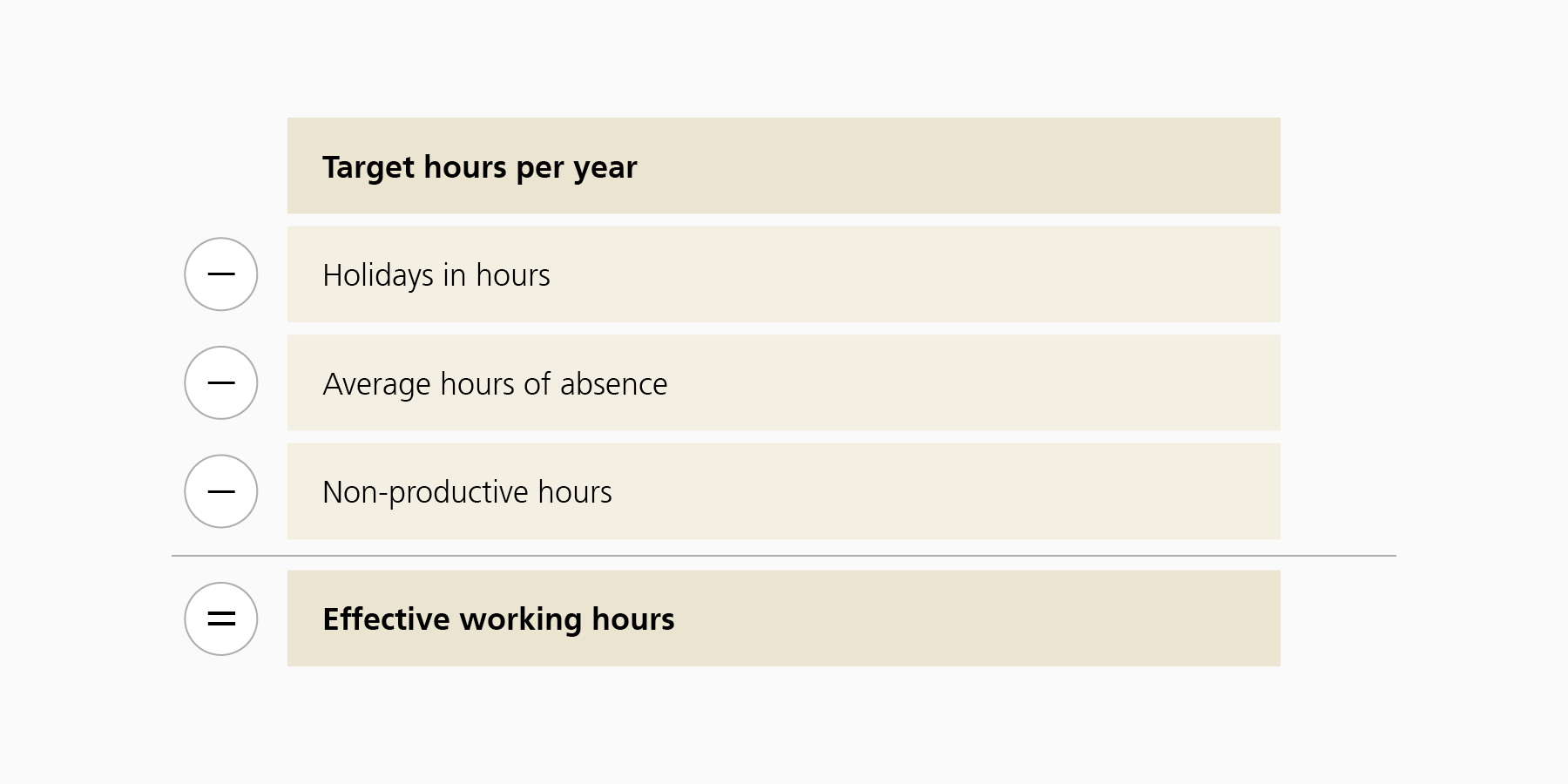At a glance
- The internal hourly rate shows the costs generated by an employee every hour.
- Full costs include salary costs, incidental wage costs and other additional costs such as training courses and office equipment.
- Effective working hours determine how many hours can actually be billed.
- Regular recalculation of the internal hourly rate ensures a solid indication of profitability.
Keep up to date on effective cost planning by registering for our business newsletter now.




